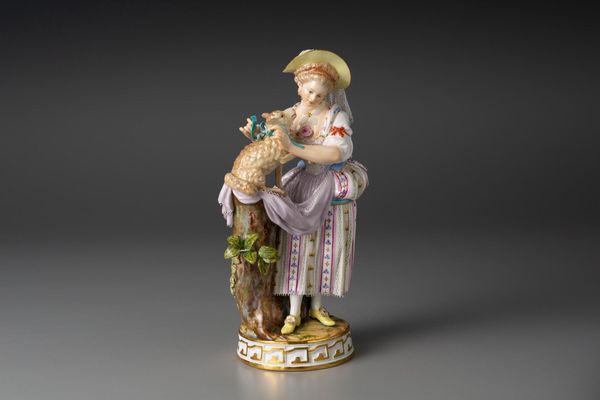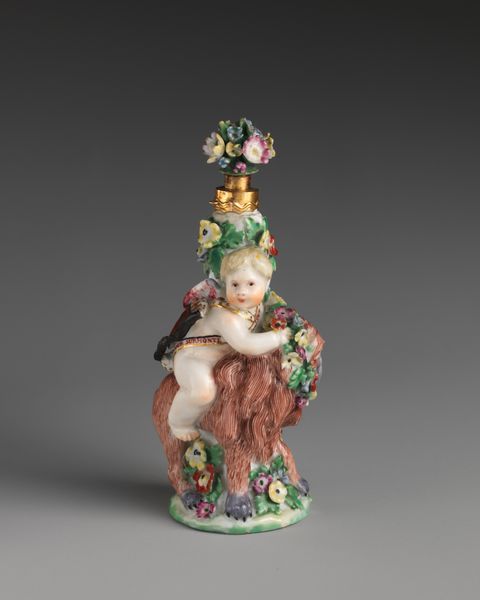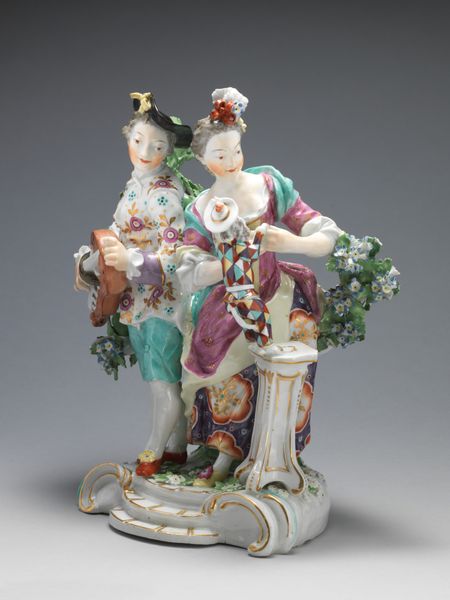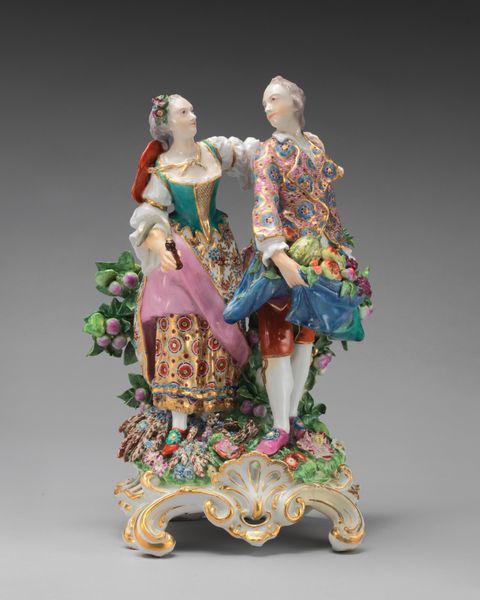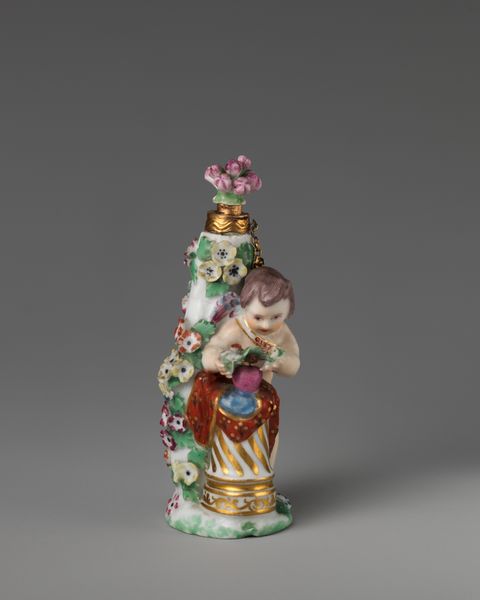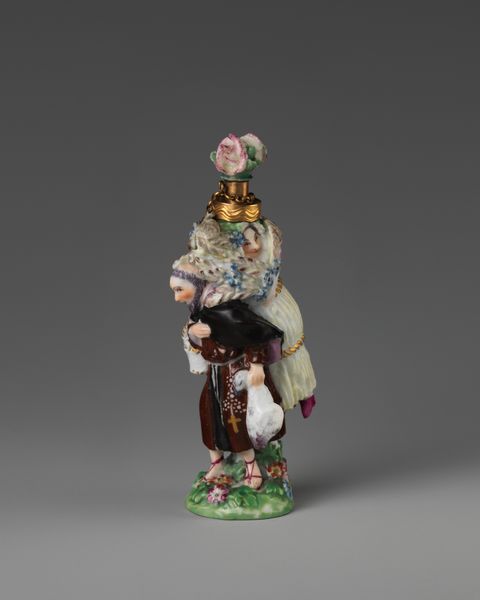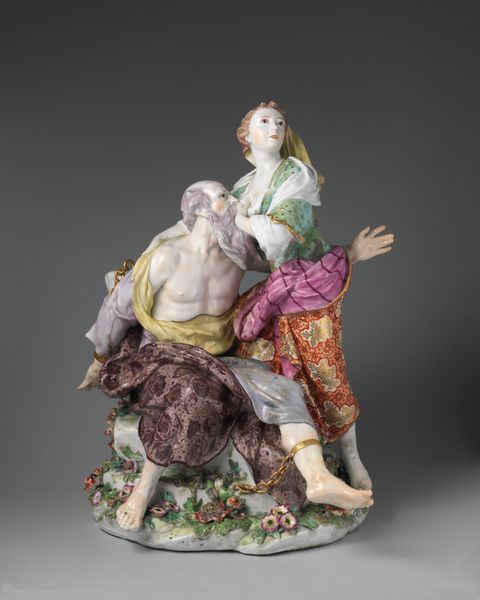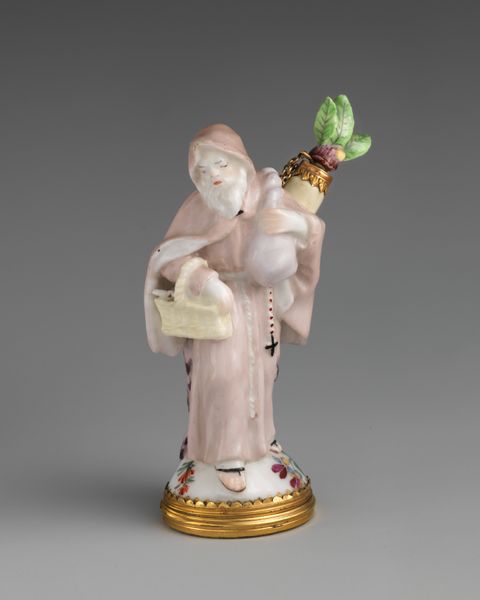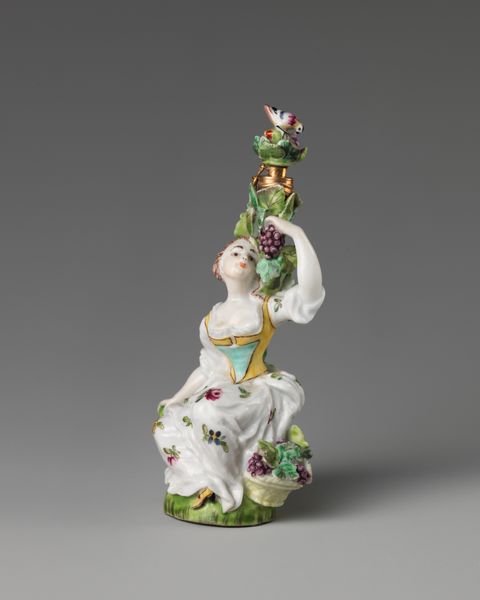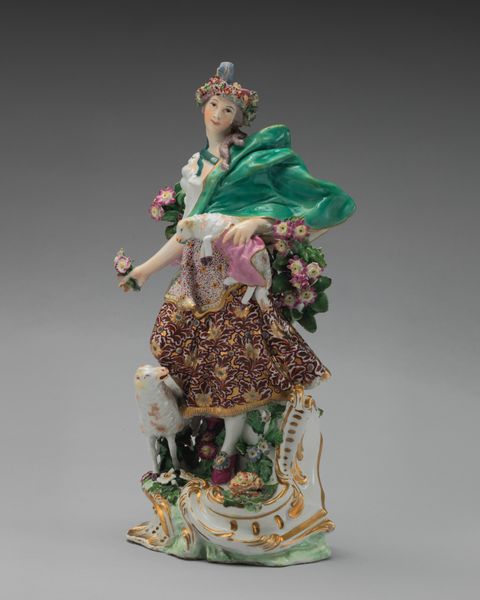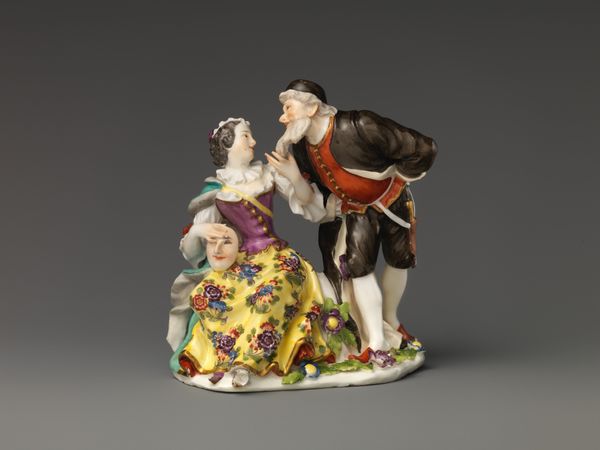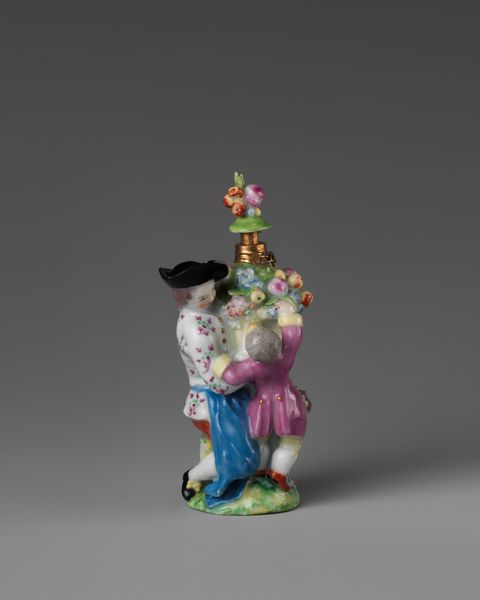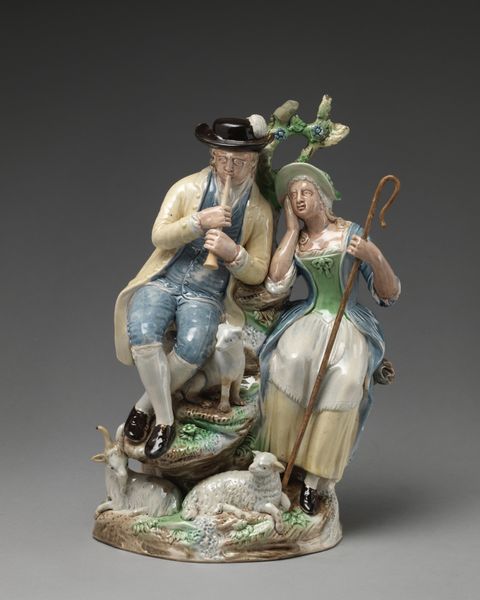
ceramic, porcelain, sculpture
#
portrait
#
ceramic
#
porcelain
#
figuration
#
intimism
#
sculpture
#
genre-painting
#
decorative-art
#
rococo
Dimensions: 4 1/2 × 2 in. (11.4 × 5.1 cm)
Copyright: Public Domain
Editor: This delicate porcelain sculpture, “Two Lovers,” dates back to between 1745 and 1760, created by the Saint James's Factory. It feels very intimate. What visual stories do you find embedded in this object? Curator: This object is brimming with symbolic weight. Note the pose: the coy dance, the stolen glance. What does it tell you about social codes of romance during the Rococo period? The flowers aren't just decorative; roses traditionally symbolize love and secrecy, don’t they? They’re acting as a visual reinforcement, deepening the theme. Editor: So, the artist uses symbolism to highlight the couple's flirtation? Curator: Precisely. And look closely at the porcelain itself. Its fragility echoes the delicate, often precarious, nature of love. The fact that such a tender scene is immortalized in porcelain elevates fleeting emotion to something eternal. Don’t you think this suggests a desire to capture and preserve intimate moments? Editor: Definitely. And the pastel palette – pinks, blues, yellows – evokes a sense of lightness and playfulness. Curator: Indeed. Each color contributes to the overall impression of youthful innocence. And what about the elaborate ornamentation at the top? Editor: It feels almost like a celebration, maybe a family crest… it also appears very artificial. Curator: That’s perceptive! Its inclusion points to aspiration, suggesting that their romance has an element of social ambition woven into it. The sculpture, then, becomes not just about love but about love within a particular social context. Editor: That’s fascinating! I didn't consider how social factors might be woven into the imagery itself. I am now reflecting about visual storytelling, the use of porcelain, colors and how symbols work together to construct meaning. Curator: Exactly. It serves as a tangible echo of emotional and cultural landscapes long past. The material itself becomes a form of cultural memory, inviting us to connect across centuries.
Comments
No comments
Be the first to comment and join the conversation on the ultimate creative platform.
